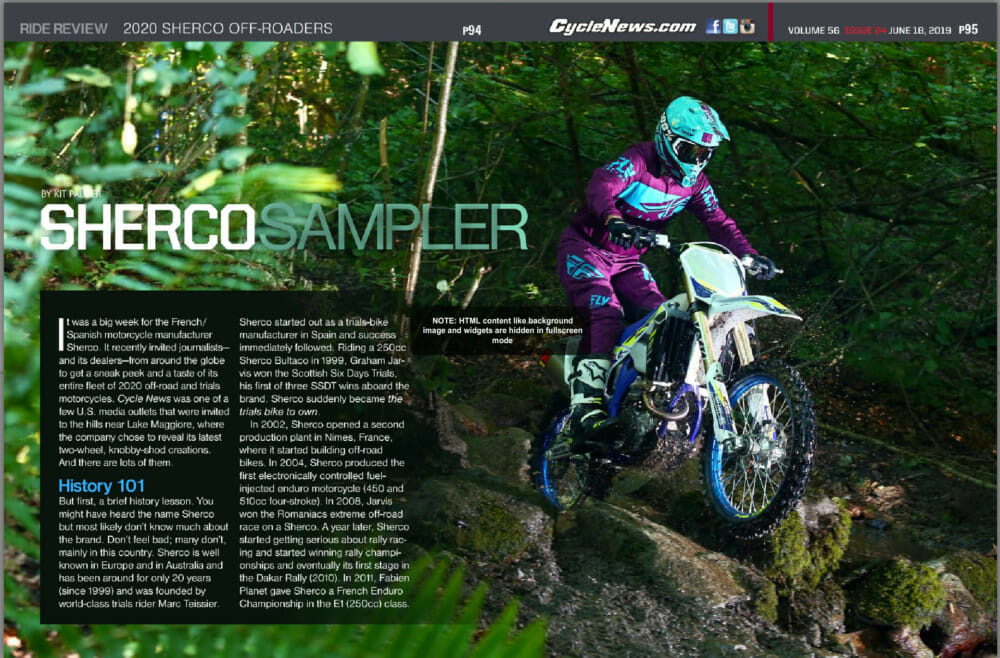Kit Palmer | June 23, 2019
It was a big week for the French/Spanish motorcycle manufacturer Sherco. It recently invited journalists—and its dealers—from around the globe to get a sneak peek and a taste of its entire fleet of 2020 off-road and trials motorcycles. Cycle News was one of a few U.S. media outlets that were invited to the hills near Lake Maggiore, where the company chose to reveal its latest two-wheel, knobby-shod creations. And there are lots of them.
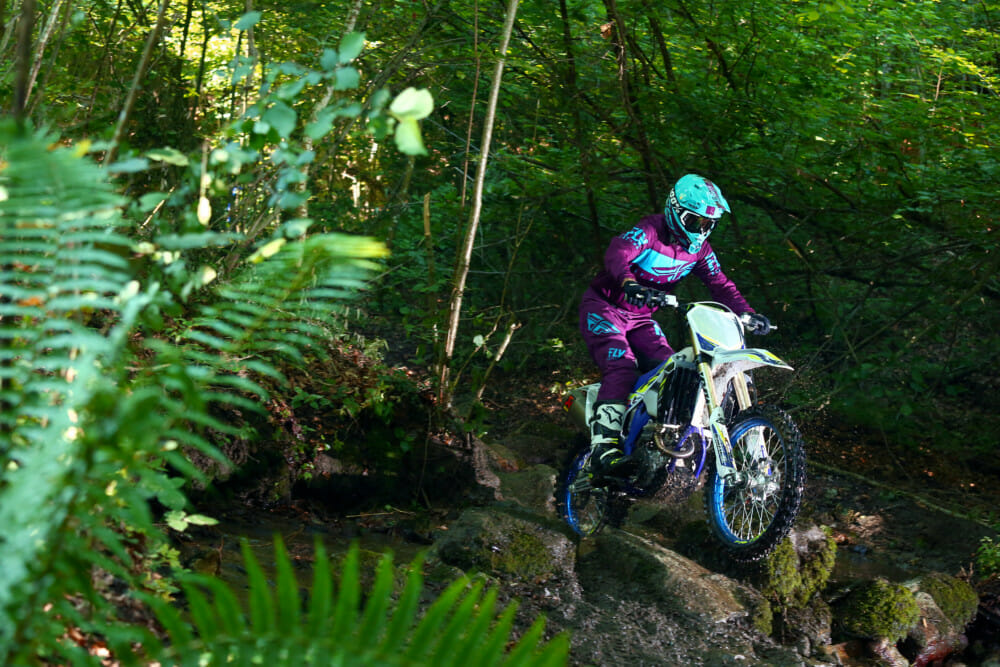
Sherco History 101
But first, a brief history lesson. You might have heard the name Sherco but most likely don’t know much about the brand. Don’t feel bad; many don’t, mainly in this country. Sherco is well known in Europe and in Australia and has been around for only 20 years (since 1999) and was founded by world-class trials rider Marc Teissier. Sherco started out as a trials-bike manufacture in Spain and success immediately followed. Riding a 250cc Sherco Bultaco in 1999, Graham Jarvis won the Scottish Six Days Trials, his first of three SSDT wins aboard the brand. Sherco suddenly became the trials bike to own.
In 2002, Sherco opened a second production plant in Nimes, France, where it started building off-road bikes. In 2004, Sherco produced the first electronically controlled fuel-injected enduro motorcycle (450 and 510cc four-stroke). In 2008, Jarvis won the Romaniacs extreme off-road race on a Sherco. A year later, Sherco started getting serious about rally racing and started winning rally championships and eventually its first stage in the Dakar Rally (2010). In 2011, Fabien Planet gave Sherco a French Enduro Championship in the E1 (250cc) class.
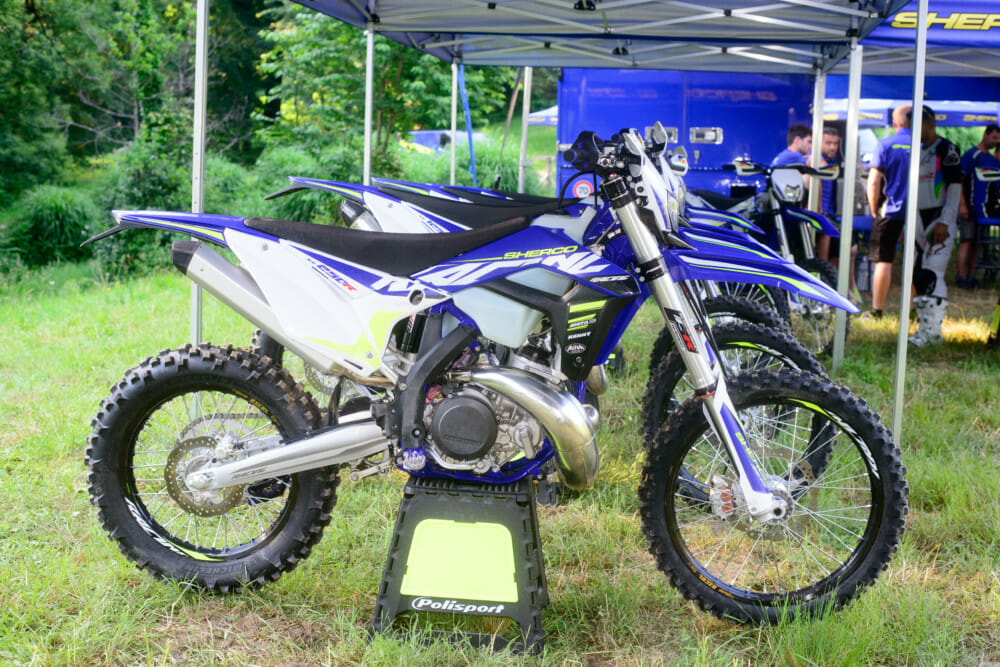 This is the 2020 Sherco SE250R Racing model. It comes with WP suspension.
This is the 2020 Sherco SE250R Racing model. It comes with WP suspension.
Riding a 300 SEF Factory, Matthew Phillips presented Sherco with its first FIM Enduro World Championship in 2016. Since then, Sherco has been racking up numerous victories in extreme off-road races. Just last year, Sherco’s Wade Young won three biggies: Red Bull Romaniacs, Red Bull 111 Megawatt, and Sea To Sky. And, Spanish rider Mario Roman won the 24 MX Alestrem in France and Hell’s Gate in Italy. Just two weeks ago, Roman and Young both finished in the top five at the ErzbergRodeo. As you can see, Sherco is not just a fly-by-night brand but one that is serious about building competitive off-road motorcycles and want to leave their mark in the off-road racing history book.
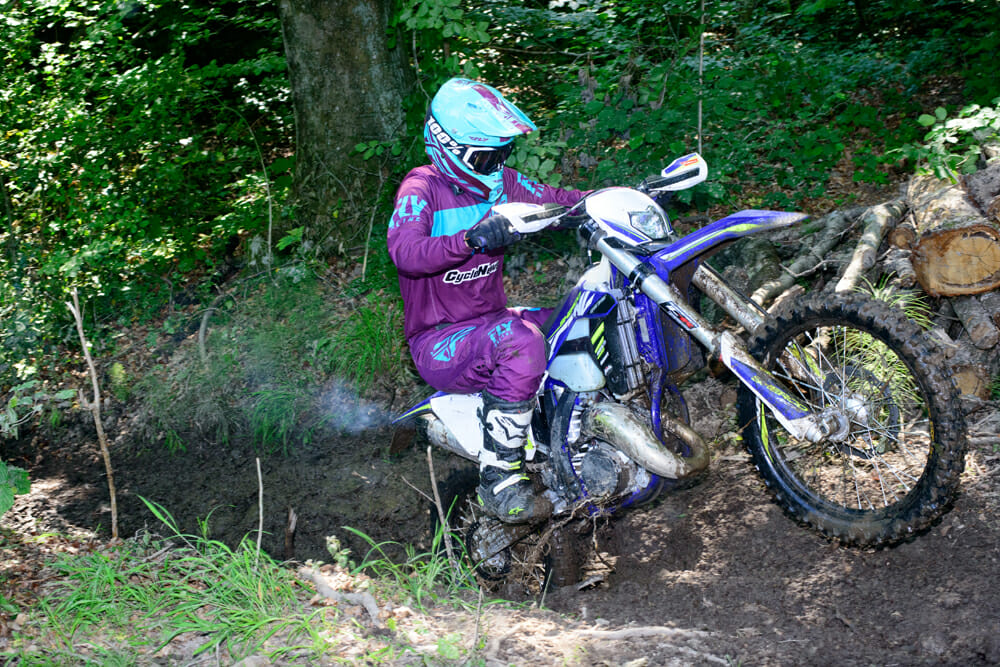 The Sherco SE125R Racing is pure fun and a perfect bike for the aspiring off-road youth racer. Photo: Ron Lawson
The Sherco SE125R Racing is pure fun and a perfect bike for the aspiring off-road youth racer. Photo: Ron Lawson
The Players in the 2020 Sherco Off-Roaders Review
As I said, Sherco has many off-road bikes to pick from. There are two-strokes (SE) and four-strokes (SEF), ranging from 125cc to 500cc. Starting with the two-strokes, Sherco offers a 125, 250s and 300s. Four-strokes, you have 250s, 300s, 450s, and 500s. Most of them—both two- and four-strokes—come in two variants: “Racing” (standard) and “Factory” (higher end). There is also a “Cross Country” (SC and SCF) line that is designed exclusively for the U.S. market.
What you need to know is that the Racing models come fitted with WP suspension and the Factory with upgraded KYB suspension (48mm fork and larger 50mm shock), and the four-strokes Factory models are equipped with Akrapovic exhausts; two-strokes FMF mufflers. Other things exclusive to the Factory bikes include special handlebars, grips, engine guard, rims, sprocket, and seat.
The U.S.-spec Cross Country is a Factory model. It also get KYB suspension—but with stiffer settings—and Dunlop tires with full knobbies versus Euro-spec tires. The Cross Country models also come sans lights, instrumentation, and racing wiring harness. (There is no Racing version of the SC.)
As far as changes from 2019 to 2020, most are refinements with special emphasis on reducing weight, engine noise (for the larger four-stroke models) and improving durability. Last year, the entire range saw a significant revamp, not so much this year.
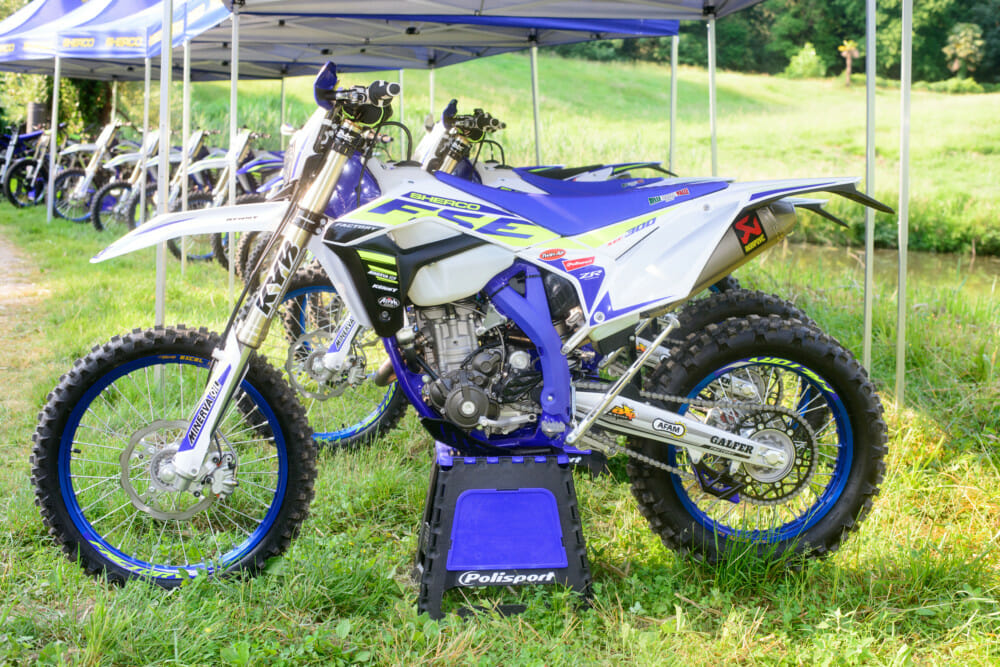 The Sherco SE300F is an outstanding all-around off-road bike that will appeal to a wide range of riders.
The Sherco SE300F is an outstanding all-around off-road bike that will appeal to a wide range of riders.
Sherco Two-Strokes
The SE125R is a relatively new model for the brand. It was introduced last year and features a six-speed transmission, an electronic—and now adjustable—exhaust power-valve, a Keihin carburetor, an updated piston, and electric starting!
This bike, which comes only in the Racing package, was a big hit among the journalists, including me. “Fun” was the word I heard used most often to describe it. I used it as well. But not only is it fun to ride but fast, as well. Yet, it’s very rideable for a 125cc two-stroke off-road bike. It screams on top yet will chug along just fine off the bottom when things get tight and technical. It would never stall but would from time to time load up just a bit after long periods of super-slow speeds, but a couple of quick blips of the throttle would clean things out instantly. For a 1-2-5, it has ample torque and bottom end.
Of course, the Sherco 125 feels ultra-light, slim and agile, and the suspension fit my 170 pounds just fine. Yes, this bike is pure fun.
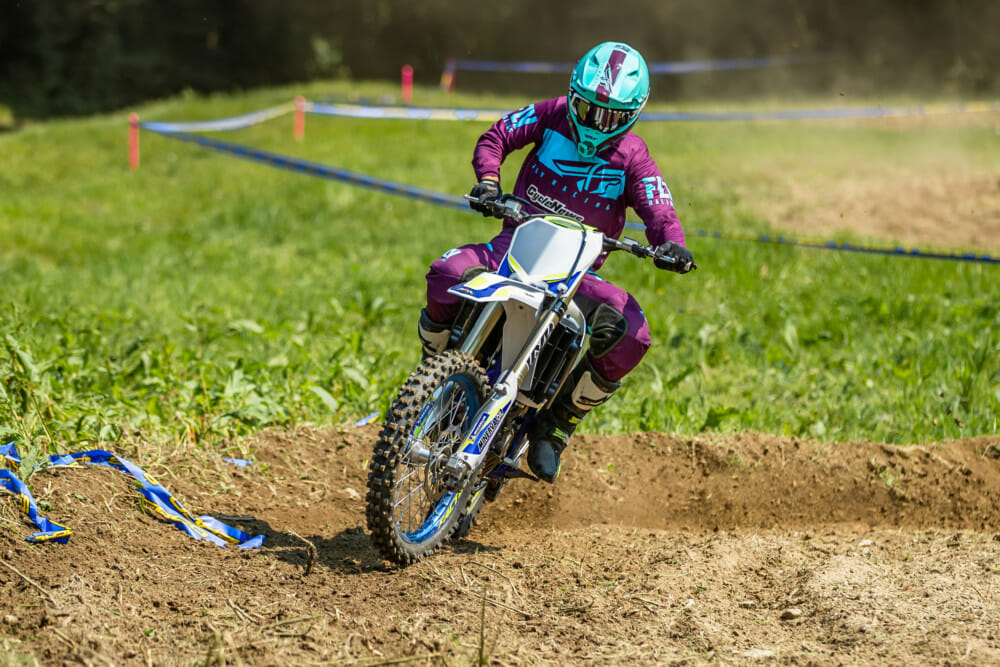 The SE300F is perfect for those who like 250Fs but want a little more power overall while retaining agility.
The SE300F is perfect for those who like 250Fs but want a little more power overall while retaining agility.
The 250 and 300 are essentially the same motorcycle, except for the 300’s larger bore, of course. They both feature an electric starter, a six-speed transmission, and an electronic power-valve. And, they are carbureted.
Changes from 2019 to 2020 are minimal but effective. Engineers tweaked their intake systems to improve rideability, and it worked, especially with the 300. The 300 is a powerful motorcycle, yet it is still very manageable thanks to a smooth transition from bottom to mid. This is the bike you want to be on when trails are ultra-technical and hilly. It’s nearly impossible to stall, and it chugs like a bulldozer over rocks and roots, yet has plenty of power to pull you up long and steep, Erzberg-type hills.
The 250 feels very similar but is slightly easier to ride because of a more forgiving engine that doesn’t quite hit as hard when you get on the gas in the meat of the powerband. As a result, you don’t have to hold on as tightly, which saves you energy. Overall, the 250 requires less effort to manipulate and is probably the better choice for most people when it comes to extreme off-road riding. Still, the 300 is a fantastic motorcycle.
Both the 250 and 300 has a map switch that can be adjusted on the fly via a switch/lever on the right handlebar. You have an aggressive mode and less aggressive. You can feel the difference. The less-aggressive mode is well suited for the tight trails, especially on the 300.
While the WP suspension works quite well on the Racing model, the KYB suspension on the Factory works noticeably better when pushed harder. It has a little more “cush” and a more consistent feel. The Cross Country’s KYB suspension, on the other hand, is set up too stiff for the tight single-track trails that we rode on in Italy. The SCs were a little too hard to control over the roots and rocky creeks. The SCs are a better candidate for more wide-open terrain that you’d typically find in the Western U.S.
 This is Sherco’s premier off-road race bike—the SE300 Factory. It’s easy to ride and ready to take on anything.
This is Sherco’s premier off-road race bike—the SE300 Factory. It’s easy to ride and ready to take on anything.
Sherco Four-Strokes
The SEF four-strokes are impressive, as well. The 250 is powerful and has impressive bottom-end. Ditto the 300, just more of it. Of the two, the 300 is easier to ride and is noticeably faster than the 250, which is a fast bike in its own right. Overall, though, the 300 is just a great all-around bike that does everything well—at least everything we were able to do in Italy.
Like the two-strokes, the four-strokes have a two-way map switch. The difference between the two modes is more dramatic on the four-strokes than it is on the two-strokes. For racing, the standard aggressive mode is the way to go. The mellow mode is excellent for casual trail riding.
Both bikes are exceptionally stable on the trail and tend to stay that way even after plowing into roots and rocks. The SEFs do, however, feel heavier than their SE two-stroke cousins but offer a plusher ride.
I was, going in, somewhat intimidated by the 450 SC. Having never ridden a 450 Sherco before and having heard how much of a brute it was last year, I approached the 2020 Sherco 450 Cross Country with a bit of trepidation. But I quickly discovered it was all for naught. The 450 is anything but a monster; instead, it was a pleasure to ride. The 450 received the most changes from 2019 compared to the other models, and many of those changes were made to the engine and top-end to reduce engine noise and, more importantly, spinning inertia. Evidently, these changes worked!
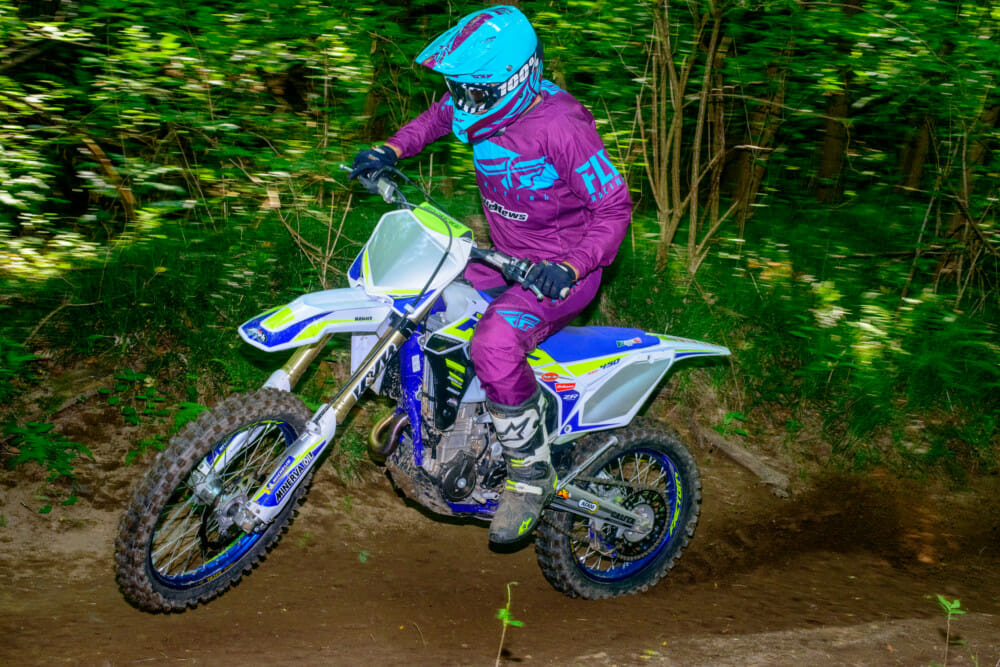 The 2020 SEF450R isn’t the beast is used to be. Photo: Ron Lawson
The 2020 SEF450R isn’t the beast is used to be. Photo: Ron Lawson
The 450 was surprisingly agile and responded well to rider input. I found the best way to ride the 450 was to click it up a gear and let all of its torque and bottom-end do the work while keeping the R’s as mellow as possible. It worked quite well, and I felt comfortable on the bike right away. On the tight trails of Italy, I rarely had to shift it. I did most of that instead on the fast grass track that Sherco had laid out for us.
Sherco did not have a 500 on hand for us to ride.
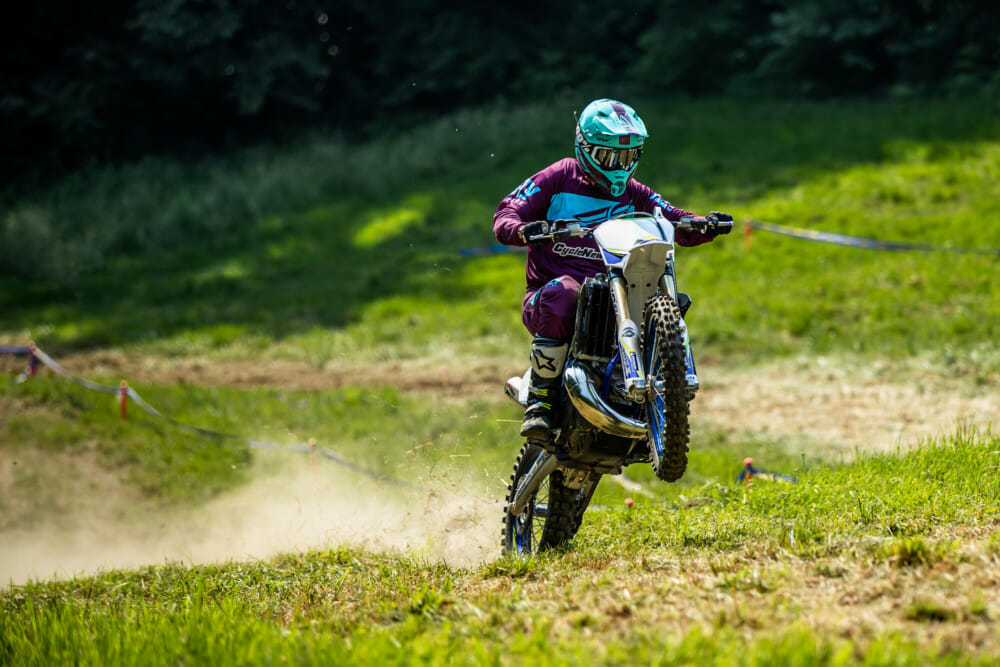 The U.S. also gets a Cross Country version, sans lighting and instrumentation. Suspension is also stiffer.
The U.S. also gets a Cross Country version, sans lighting and instrumentation. Suspension is also stiffer.
Nuts And Bolts
Even though Sherco is all ready to introduce fuel injection to its two-stroke off-road bikes, it’s holding off. All of their 2020 production two-strokes are still carbureted. Sherco feels that FI for two-strokes isn’t worth the cost versus the benefits, so, their reasoning is: Why pay more for something that isn’t necessarily better when it comes to performance? When eventually forced to because of emission regulations, Sherco will make the switch but probably not before then. (Euro4 regs lasts until 2024.)
“Carburetion is the two-stroke mentality,” said Sherco founder Marc Teissier in a recent interview in Cycle News. “It has simplicity and ease of use and maintenance for the customer with less cost. Fuel injection will add an extra cost on the bike. We have all the technology for the four-stroke, and now also for the two-stroke fuel injection, but we wait. The bike is ready, the system is ready, and we are ready, but it is not yet necessary to put it on the market.”
You should start seeing more blue, white, and yellow Shercos in the U.S. and North America market soon. Ryan Young Products (RYP) in Shelbyville, Kentucky, is the new U.S. importer of Sherco off-road motorcycles. RYP was already Sherco’s U.S. trials importer, and has been for nearly 20 years, and will now take on the off-road models, as well. Sherco says it has plans to significantly expand its presence in the U.S., which will hopefully include firing up its first dealership in California.
Sherco has yet announced pricing.CN
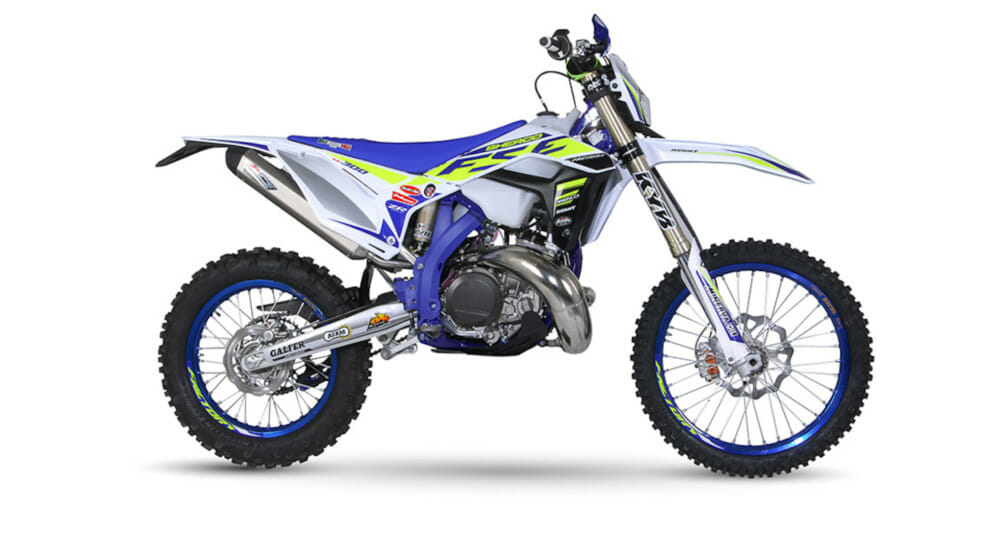
2020 Sherco Rundown
- All enduro models have reduced friction in the suspension linkage and improved build quality to increase servicing.
- Two-stroke 250/300 model: Air intake funnel design improves low- and mid-range power to suit extreme riding better.
- 250/300 2T engines features 15mm shorter intake pipe from carb to cylinder to improve low-speed response. It is now also one part instead of two saving weight.
- 250/300 models have a modified reed-valve to improve sealing, increase air flow and performance. New construction is plastic charged with fiberglass/carbon/viton.
- Central engine casting is modified to increase flow and boost mid-range, plus widen powerband.
- Lighter clutch hub on 250/300 2T engines to reduce inertia and lever pull for extreme riding.
- Reduced size master cylinder piston and clutch cylinder piston, also for reduced lever effort.
- Clutch lubrication flow is increased.
- 250/300 models have easier access fuel tap and now 0.4 gallons of reserve.
- Blue frame protectors on the Factory models.
- Factory and XC models run the 48mm KYB forks and a new 50mm KYB shock to increase stability at high speeds and improve bump absorption.
- New drilled front final drive sprocket/gear.
- The SC models are basically the Factory model without lights or a racing wiring harness and with stiffer suspension settings.
- Factory and XC models get an AFAM steel rear sprocket.
- All Racing models get a 5.3-once lighter plastic muffler end cap.
- 250/300 four-stroke bikes have a lighter starter system sprocket assembly to improve starting – improves performance for dead engine race starts.
- 250/300 4T improved gear selector for a claimed 60% improved accuracy.
- Bigger 450/500 4T engines are 1.3 pounds lighter thanks to lighter crank, clutch disc material, clutch hub, primary transmission, balancing shaft, freewheel sprocket, oil pump sprockets.
- 450 4T has a new cam chain for reduced friction and noise to meet Euro4 engine noise regulations.
- The 125 two-stroke has an adjustable height power valve giving more options for settings.
- New piston profile on the 125 2T to improve the wear uniformity and stability.
- New engine map on the 125 for improved high-speed performance.
